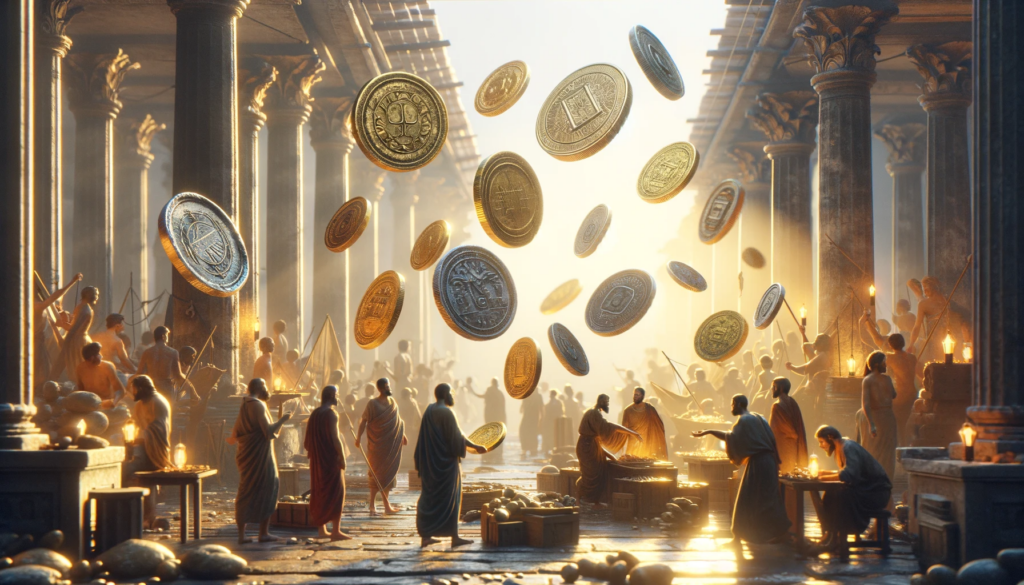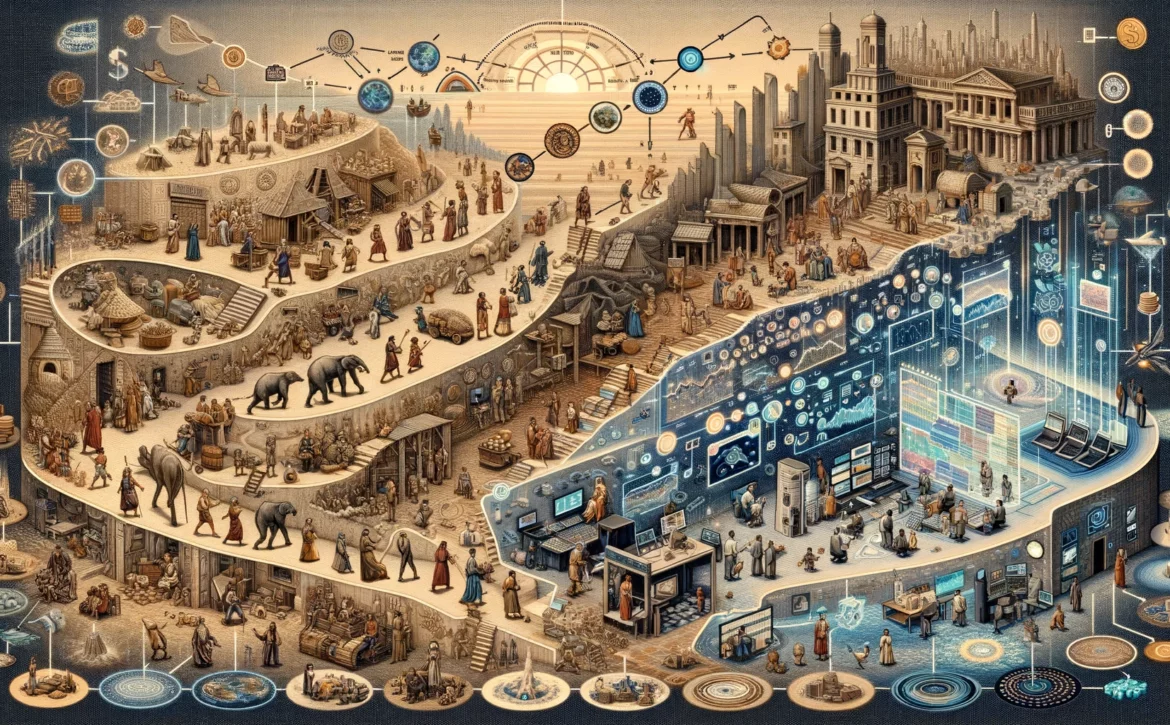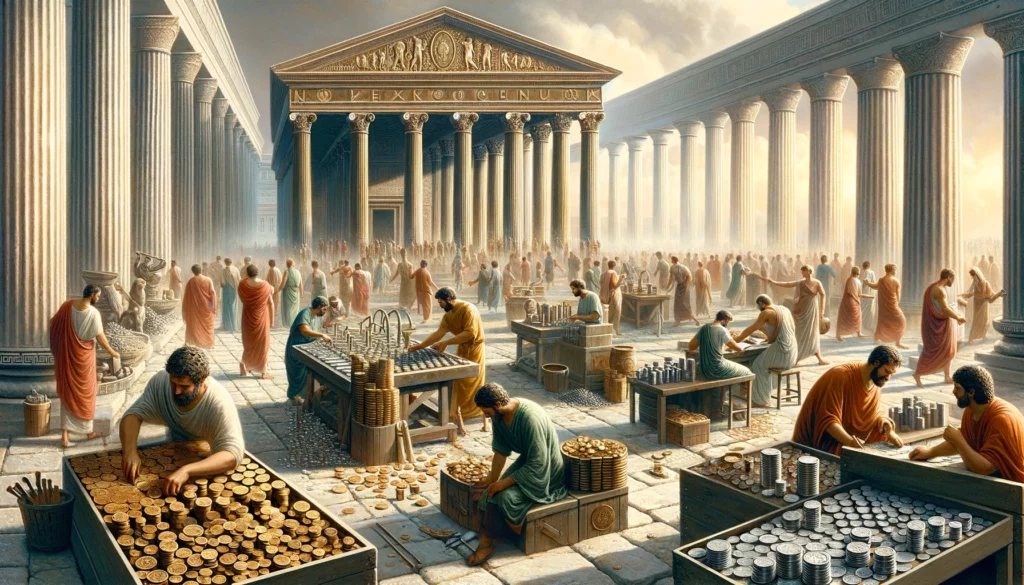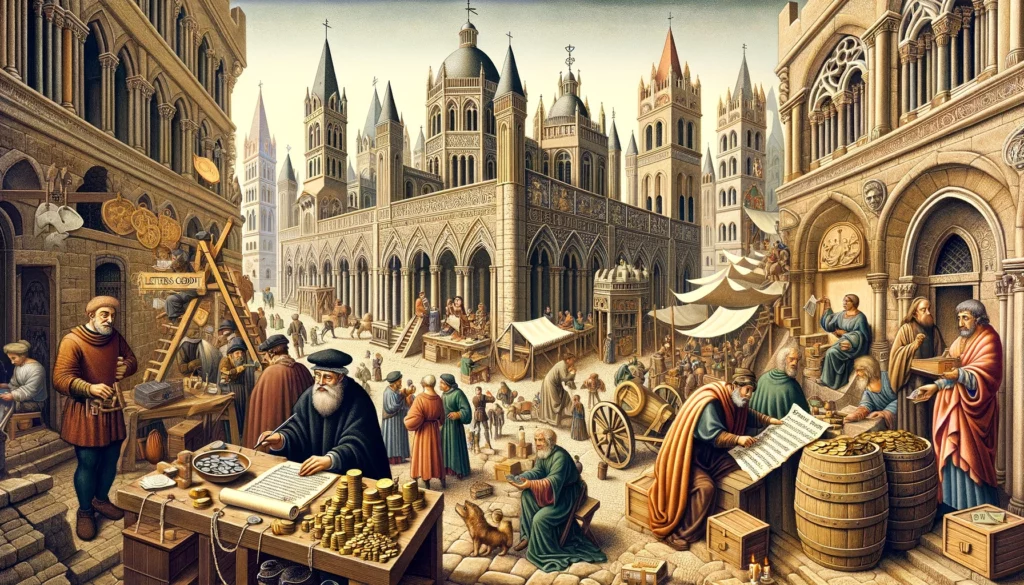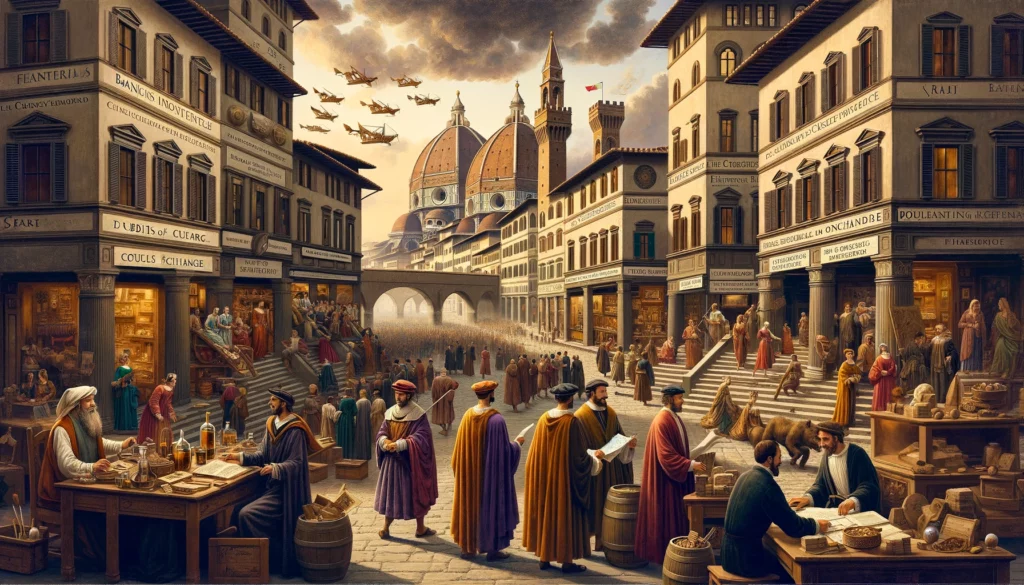The Transformation of Finance from 500 CE to the 17th Century
As dawn broke over the medieval world, an economic revolution quietly unfolded. Trade routes snaked across continents, bustling with merchants eager to exchange silks for spices, gold for gems. Yet, the physical carriage of coinage, heavy and perilous, became a towering challenge. Bandits lurked, and the weight of wealth was a tangible burden. Enter the game-changing solution: letters of credit.

Letters of Credit: The Medieval Game Changer
Imagine, if you will, a world without the convenience of electronic transfers or credit cards, where moving wealth required innovation. Letters of credit emerged as a beacon of safety and efficiency. Merchants could now deposit funds in one location and withdraw the equivalent amount elsewhere, a revolutionary step that slashed the risk of theft and loss. This ingenious system didn’t just secure wealth; it lubricated the wheels of trade, enabling merchants to traverse continents with nothing but a piece of paper—a promise of payment.
Bonds: Building the Backbones of Cities and States
Parallel to the rise of letters of credit, medieval Italy witnessed the birth of another financial marvel: bonds. Cities like Venice and Florence, thriving hubs of trade and culture, began to issue government and corporate bonds. These were not mere pieces of paper but symbols of trust and investment in the future. By purchasing bonds, individuals and institutions lent money to governments or corporations, receiving in return a promise of repayment with interest. This system financed infrastructural marvels, wars, and voyages, knitting the fabric of societies with the threads of mutual financial interest.
The Renaissance: The Birth of Modern Finance (14th – 17th Century)
As the Middle Ages waned, Europe awakened to the Renaissance—a glorious rebirth of art, culture, and, significantly, finance. The streets of Florence, vibrant and teeming with life, were the backdrop to this financial revolution.

The Medici Influence: Banking Pioneers
The Medici family, synonymous with art and power, also etched their name into the annals of financial history. Their banking practices, particularly double-entry bookkeeping, were revolutionary. This method not only enabled the tracking of debits and credits with unprecedented accuracy but also laid the foundation for the accounting systems we depend on today.
Bills of Exchange: The Precursors to Modern Checks
Another milestone of the Renaissance was the rise of bills of exchange. These instruments allowed merchants to conduct transactions without the physical exchange of money. A trader in Florence could effectively transfer funds to another in Paris, with both parties confident in the value and authenticity of this exchange. This system bridged distances, fostering a truly interconnected market.
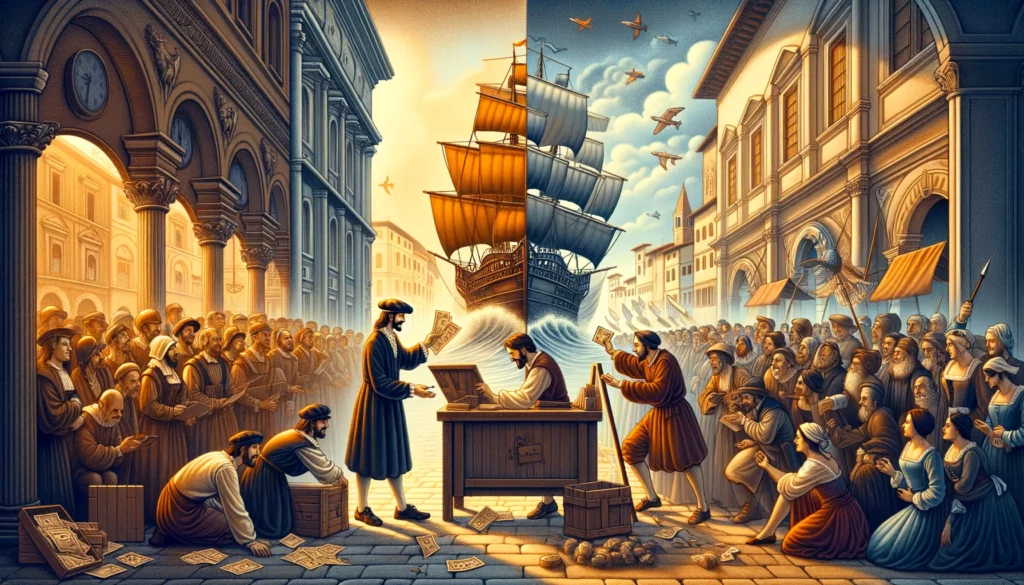
The Advent of Public Debt
Perhaps the most groundbreaking development of the Renaissance was the conceptualization and implementation of public debt. Governments, in their quest for exploration and military might, turned to the masses, issuing bonds to fund their ambitions. This was not just about raising capital; it was a profound shift in the relationship between the state and its citizens, bound together by financial stakes in national ventures. The financing of Columbus’s voyage to the Americas through such means is a testament to the transformative power of public debt, underpinning the financial structures that support today’s global economies.
In conclusion, the journey from the Middle Ages to the Renaissance is a testament to human ingenuity and adaptability. The financial innovations of these eras, from letters of credit to the advent of public debt, were not mere economic mechanisms. They were the harbingers of modernity, paving the way for the sophisticated financial systems that fuel our world today. As we navigate our current economic landscape, we stand on the shoulders of these medieval and Renaissance pioneers, whose visions continue to shape our financial horizons.
Frequently Asked Questions:
- What exactly is a letter of credit?
- A letter of credit is a document from a bank guaranteeing that a seller will receive payment from the buyer up to a certain amount, ensuring the transaction’s security and trust.
- How did bonds benefit medieval cities and governments?
- Bonds allowed medieval cities and governments to fund projects and ventures by borrowing money from the public, promising repayment with interest, thus facilitating infrastructure development and exploratory ventures.
- Why is double-entry bookkeeping important?
- Double-entry bookkeeping is crucial because it allows for a comprehensive and accurate record of all transactions, ensuring financial clarity and accountability, which is the backbone of modern accounting practices.
All of the images above were AI-created.
Learn More




